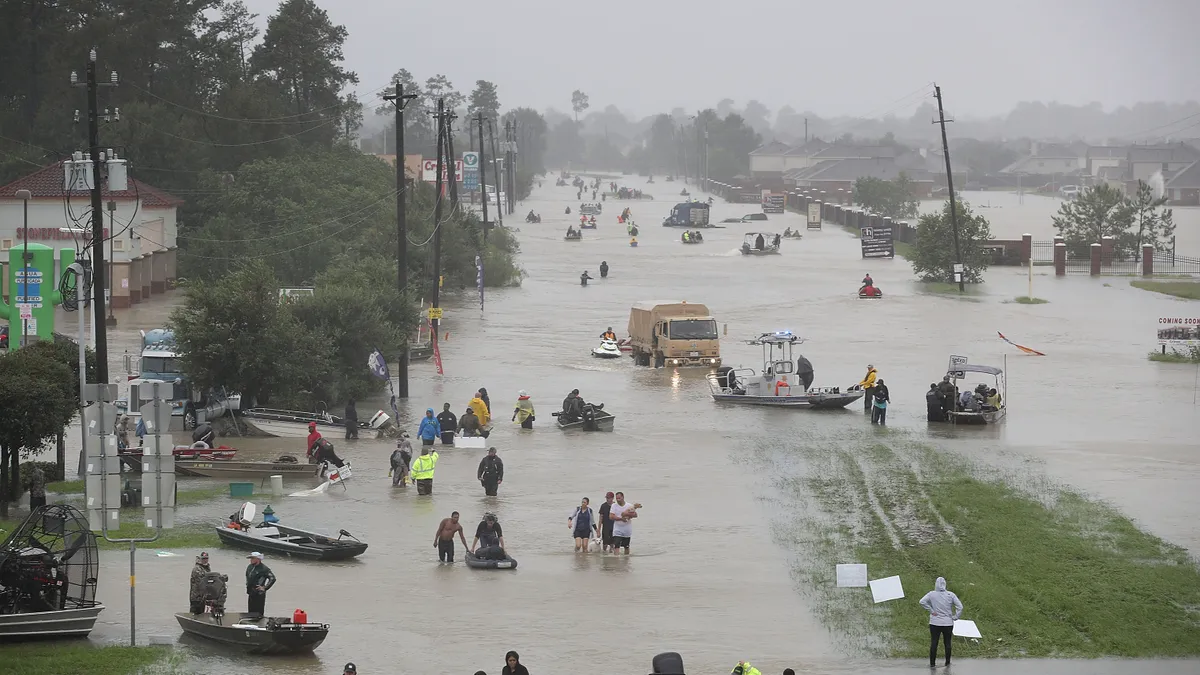Dive Brief:
- Damage from Hurricane Harvey totaled roughly $60 billion to $100 billion in 2017 dollars, second only to Katrina in terms of cost and damage; Irma, costing approximately $30 billion, is sixth, IHS Markit reported last week.
- Experts estimate that the effect on third-quarter GDP growth will equal about 1.2 percent, with -0.5% from Harvey and -0.7% from Irma. GDP losses during the third and fourth quarters and the hoped-for 2018 rebound depends on degrees of economic damage and the speed of reconstruction efforts.
- According to the study, global crude oil markets were "relatively undisturbed," as the losses caused by the hurricanes aligned with a decline in demand. Gas prices briefly spiked before settling in the aftermath of Hurricane Harvey.
Dive Insight:
Risk-preparedness along the supply chain goes a long way when handling severe storms.
Pre-hurricane, Home Depot cranked up the power at its Atlanta command center, where eight less-than-truckload (LTL) and full truckload (FTL) carrier representatives worked alongside the in-house supply chain team to manage coordination efforts toward shipping and distilling supplies to specific distribution centers close to storm epicenters. Trucking too was involved in rescue and rebuilding efforts, which resulted in a 7.1% increase in tonnage movement. The Thomas Index revealed increased interest in materials needed for rebuilding, allowing supply chain managers and others to better predict direct spending on specific materials and services needed in the aftermath.
The biggest takeaway from the study might be this statement from IHS Markit's principal economist for the U.S., Karl Kuykendall: "Harvey and Irma have posed significant short-term challenges but they will not change the favorable long-term growth trends for Houston or Florida."
According to Kuykendall, Texas and Florida were able to get back up on their feet quickly due to their risk-preparedness but also "a sense of urgency," as Houston especially is an integral piece of the American economy due to its oil, chemical and trade functions. The overall economic impact on other industries — including the chemical and automotive industries and transportation infrastructure — appears to be relatively light long-term.












